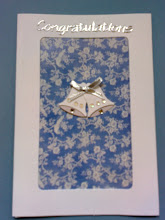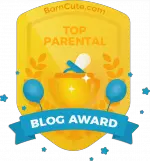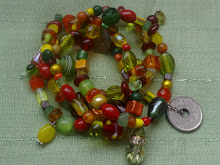For the first session, the instructor drew some shapes on a white board and asked us to copy them (image below is my and Little Ladies attempts). These basic shapes are repeated to create more complex henna designs. We were asked to practise these at home and also to select a henna design we like for the second session and bring in a picture.

We also had to have a go at creating our own patterns and copying some the instructor created on the board.
If you are interested in following a similar course, the Tap Dancing Lizard has a series of three brilliant booklets which break down the patterns into their composite shapes and then offers step-by-step exercises which allow you to practise each shape and which get more complex (look for The Henna Page How-to volumes 1-3, an example I printed off is below).
In preparation for the second lesson, I pulled out my battered old henna folder and tidied it up. This holds all of the images I have collected over the years of henna and patterns that could be translated into henna. These come from photos, magazines, brochures, adverts and a few printed from the internet.
For my homework, I picked the shoulder design here (sixth row) from the Henna Cat website of Catharine Hinton. I fell in love with her designs years ago and have used her designs a couple of time to attempt henna on myself.
The instructor got us to create our own henna. The recipe we used was:

We had to copy the design we had chosen onto paper and then go over it with the henna using a cocktail stick. This reminded me of how women used to create designs when I was very small and henna cones weren't commonly available (although I can remember asking for patterns on our hand when we were small and our mum just covering our whole hands with henna paste, resulting in rather unsatisfying orange hands every Eid).
I finished my design and was instructed to wipe it off and start again to get some practise in. You can bet I took my sweet time the next time round. I found the whole thing very therapeutic. I've also met some really nice ladies who are also keen to learn. For the next session we will be creating our henna cones. I only hope now I get to do the whole course and don't miss any sessions because I've gone into labour too close to one!
- Pure green henna (the greener the better as this tends to give a deeper stain on the skin).
- Water in which a spoon of coffee and one tea bag has been steeped and then cooled (again this gives a deeper colour than plain water).
- A spoon of honey (or alternatively you can use molasses).

Little Lady loved mixing this and finally stopped moaning about how boring the course was (I think she thought she thought she would turn up and start wielding a henna cone and henna-ing people, so she wasn't very impressed when we spent lots of time registering and then practising on paper).
We had to copy the design we had chosen onto paper and then go over it with the henna using a cocktail stick. This reminded me of how women used to create designs when I was very small and henna cones weren't commonly available (although I can remember asking for patterns on our hand when we were small and our mum just covering our whole hands with henna paste, resulting in rather unsatisfying orange hands every Eid).
The children had to paint the henna directly onto their paper and the mothers were given glass to cover the design and henna over.




































Salams. Can you tell me where to buy the pure green henna? I have a 3 year old who loves henna but im wary of using cones that may have a lot of chemicals in them
ReplyDeleteassalamualaikum wa rahmatulahi wa barakatu!!!
ReplyDeleteMASHA'ALLAH! nice blog sis..this is awesome! i love the henna designs you have going on here! wish i could get these designs down though!!!
lovely!
xo khadijah
www.onechinesemuslimah.blogspot.com